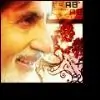From Wikipedia, the free encyclopedia
Jump to: navigation, search
Irfan Pathan
India (Ind)
Batting style Left hand bat
Bowling type Left arm medium fast
Tests ODIs
Matches 25 73
Runs scored 835 1006
Batting average 27.83 25.15
100s/50s -/6 -/5
Top score 93 83
Balls bowled 5078 3555
Wickets 91 115
Bowling average 30.79 25.91
5 wickets in innings 7 1
10 wickets in match 2 n/a
Best bowling 7/59 5/27
Catches/stumpings 8/- 12/-
As of February 1, 2007
Source: Cricinfo.com
Irfan Khan Pathan pronunciation (helpinfo) (born October 27, 1984 in Baroda, Gujarat, India) is an Indian cricketer who has been a member of the Indian national cricket team since late 2003. Beginning his career as a left-arm fast-medium swing bowler (evoking comparisons with Pakistan's Wasim Akram), Pathan improved his batting skills to become a bowling allrounder, even opening the batting on occasions. This led to critics comparing him with former Indian allrounder Kapil Dev.[1] The improvement in his batting also coincided in a steady loss of pace and bowling form. After opening both the batting and bowling in late 2005 and early 2006, Pathan was dropped from the team in both Test and One-day International (ODI) forms of the game.
Contents [hide]
1 Early years
2 Early international career
3 Chappell era
4 International omission
5 Awards
6 References
[edit] Early years
Pathan grew up with his brother Yousuf in a mosque in Baroda, in an impoverished family. His father served as the muezzin. Although their parents wished them to become Islamic scholars, Pathan and his brother took an interest in cricket. Their games on the grounds off and inside the mosque often necessitated apologies from their father to Muslim worshippers who visited it. In the beginning his deliveries did not reach the other end of the cricket pitch, but rigorous six-hour training sessions in blazing heat and his family's sense of discipline saw him through progress steadily. Under the guidance of former Indian captain Datta Gaekwad, Pathan rose to get selected in the Under-14 Baroda cricket team, and when he was selected at Under-15 level to represent Baroda in a national tournament, he was finally presented with a full set of cricket equipment, having before been restricted to second-hand gear due to his family's poverty.[1][2]
Pathan made his first-class debut in the 2000-01 season, after fellow left-arm paceman Zaheer Khan was selected for the national team, helping Baroda to win the Ranji Trophy. This saw Baroda qualify for the following Irani Trophy, where Pathan's performance reminded V. V. S. Laxman of Zaheer. Pathan further honed his bowling at the MRF Pace Foundation in Chennai, after being referred by Indian selector Kiran More.[1] In early 2002, he was selected for the Under-19 Cricket World Cup in New Zealand, where he took six wickets.[3] In 2003 he was selected for the India A team which travelled to England and played in the domestic Challeger Series.[2][4]
In late 2003, he was selected for the India Under-19 team to compete in an Asian ODI competition in Pakistan, where he was the leading bowler with 18 wickets. This was more than twice that of the second leading wicket-taker. His bowling average of 7.38 was also the best of the tournament and he was named as the player of the tournament.[5] Pathan was featured on the headlines when he claimed 9/16 against Bangladesh and helped India to emerge victorious over Sri Lanka in the final, taking 3/33.[6] This resulted in him being selected for the Indian national squad for the 2003-04 Border-Gavaskar Trophy series in Australia.[2]
[edit] Early international career
Pathan batting against Australia in 2004 at BangalorePathan made his Test debut in the Second Test against Australia at the Adelaide Oval in December 2003. At the age of 19, he opened the bowling following an injury to the Baroda left-armer Zaheer Khan in a high scoring match. He took the wicket of Matthew Hayden while giving away 150 runs in a single game.[7] He was dropped for the following Test upon the return of Zaheer, but was recalled for the Fourth Test at the Sydney Cricket Ground after Zaheer was reported being unfit. On another flat pitch, Pathan took the wickets of Steve Waugh, Adam Gilchrist and Ricky Ponting to claim 3/106.[8] In the ODI tri-nation tournament against Australia and Zimbabwe that followed, Pathan was the leading wicket-taker with 16 wickets at an average of 31.[9] In addition to two three-wicket hauls against Australia, he earned his first international man of the match award in the tournament, after taking 4/24 against Zimbabwe at the WACA Ground in Perth.[10][11][12] However, his tour ended on a bad note after he was reprimanded by match referees for mocking the Australian batsman Damien Martyn after his dismissal in the second final.[13]
Pathan subsequently led the pace attack again on the 2004 Test tour to Pakistan, taking 12 wickets and bowling a higher proportion of maiden overs than any other bowler to help secure India's first series victory over Pakistan in two decades.[1] He also showed prowess with the bat, scoring 49 in the Second Test in Lahore after a batting collapse of the top order.[8] He also took eight wickets at 17.8 in three ODIs, including three top-order wickets in the deciding fifth ODI in Lahore.[10][14] His ability to swing the ball both ways and his innings in Lahore lead to speculation that he could become an all rounder.[15] This saw him named as the ICC Emerging Player of the Year at its 2004 Awards ceremony.[16] Pathan continued his productive form in ODIs at the 2004 Asian Cup in Sri Lanka, where he was the leading wicket-taker with 14 wickets at 16.28 with three three-wicket hauls. This continued during India's brief campaign at the 2004 ICC Champions Trophy, where he claimed 5 wickets at an average of 9.[14][17]
Pathan continued to improve his batting with a defiant 31 and 55 against Australia in October 2004 in Bangalore. This was his first half-century after the specialist batsmen had failed in the First Test. However, his career was put on hold after he suffered a side strain in the following Test in Chennai, causing him to miss the Tests in Nagpur and Mumbai.[18][19] After being overlooked for the First Test as selectors opted for three spinners,[20] he returned in the Second Test against South Africa in Kolkata, before making his name on the December tour to Bangladesh. Swinging the ball both ways, Pathan took 5/45 and 6/51 including several LBW decisions in the First Test in Dhaka to claim his first ten-wicket haul and his first Test man of the match award as India claimed a commanding innings victory.[21] He followed this with a match haul of 7/118 in the following match in Chittagong to take 18 wickets at 11.88 to be named as man of the series.[8][22][23]
In late 2004, the Board of Control for Cricket in India introduced central contracts for international players for the first time, and Pathan was given a B-grade contract.
Year 2005 began for Pathan rather poorly. He could take only 6 wickets at 68.33 in the home Test series against Pakistan after losing pace and accuracy.[24] He was subsequently dropped for the ODI series, playing in only one match in which he conceded 67 runs without success in 8 overs. However, he did manage to post his first ODI half-century, scoring 64.[10] Greg Chappell became the coach of the Indian team following the Pakistan series and subsequently identified Pathan as a potential all-rounder. He started to hone Pathan's batting skills, which had up to this point yielded 275 Test runs at 19.64.[22] Pathan was subsequently signed by Middlesex County Cricket Club for the English country season, where he attempted to regain his form.[25]
[edit] Chappell era
Pathan was recalled to the ODI team for the 2005 Indian Oil Cup in Sri Lanka in August. This was Chappell's first series in charge as a coach, in which Pathan played in all matches and took 6 wickets. He showed further signs of returning to peak form in the Videocon Triangular Series in Zimbabwe, taking 10 wickets at 16.1 in four matches as well as scoring a half-century. This included his ODI career best of 5/27 against Zimbabwe in Harare.[10][14][11] He was subsequently the leading wicket-taker as India took a 2-0 clean sweep of an away Test series against Zimbabwe. In the First Test in Bulawayo, Pathan took 5/58 and 4/53 as well as scoring 52 in a man of the match performance to help India to an innings victory. He followed this with 7/59 haul, his Test career best, and 5/67 in the final Test in Harare, his second ten-wicket match haul to set up a ten wicket victory. He was again named man of the match, and his 21 wickets at 11.29 runs saw him named man of the series. This made him only the third bowler after Anil Kumble and Johnny Briggs to take 21 wickets in a two-match series.[8][22][23][26]
Upon the team's return to India, Chappell experimented with Pathan by using him as an opening batsman in the Limited Overs Challenger Series prior to the late 2005 series against Sri Lankan cricket team. Pathan was subsequently used at No. 3 in the batting lineup in the First ODI against Sri Lanka in Nagpur, where he scored 83 runs from 70 balls to help India post a total of 6/350.[10] Pathan also took 4/37 and 3/38 in Mohali and Baroda respectively to win two man of the match awards, taking ten wickets at 25.6 for the whole series.[14] Pathan continued his strong ODI form with another man of the match performance of 3/23 and a knock of 37 runs against South Africa in Bangalore.[11] After scoring two consecutive ducks in the Test series against Sri Lanka, Pathan was elevated to opening in the second Test in Delhi, after regular opener Virender Sehwag was down with illness. Pathan scored 93 runs to help set up a winning target. In the following match in Ahmedabad, he scored 82 runs and combined in a century stand with V. V. S. Laxman to revive India after an early batting collapse. He also took seven wickets at an average of 26 runs in the series, which India won 2-0.[8][22] Pathan later admitted that he had been disappointed in failing to score a Test century.[27]
Following his strong performances in 2005, Pathan was promoted in December to an A-grade contract by the Board of Control for Cricket in India.[28]
Pathan had another difficult start to the new year in 2006 on the Test tour to Pakistan. In the first two Test matches played on flat surfaces in Lahore and Faisalabad, he had little success against the Pakistani batsmen, taking a total of two wickets while conceding 319 runs. However, he made use of the good batting conditions himself and scored 90 in a double century partnership with wicket-keeper Mahendra Singh Dhoni in Faisalabad. Pathan found success with the ball in the Third Test in Karachi, where he became the first person to claim a hat-trick in the first over of a Test match and the first Indian to take a hat-trick in an away Test. It was also the highest in terms of total averages of the batsmen dismissed (130.18: Salman Butt 34.27, Younis Khan 46.04, Mohammad Yousuf 49.86).[29] He finished with a haul of 5/61 but was punished in the second innings, taking 1 wicket while conceding 106 runs as Pakistan set a target which was beyond India's reach.[8] Despite his Test travails, Pathan continued to perform strongly in the ODI arena, scoring 65 in the top order in the first ODI against Pakistan in Peshawar before making three consecutive three wicket hauls in the following matches. This included a man of the match performance that included a haul of 3 wickets for 43 runs at Rawalpindi as he claimed nine wickets at 18.88 for the series.[11][10][14]
Pathan had a quiet series against England following his return to India, taking 8 wickets at an average of 39.37 runs and scoring 121 runs at an average of 24.2 runs in three Tests.[22] Again his ODI form was unaffected, taking eleven wickets at 15.63, which also included a a stacking up 4/51 at Goa and scoring 123 runs with the bat as India easily claimed the series 6-1.[10][14]
[edit] International omission
Pathan began to suffer loss of form during the tour of the West Indies in May 2006, when he managed only 24 runs at a batting average of 6 runs and averaging 6 wickets at 29.83 while bowling in the ODI arena. After a poor display in a first-class tour match, he was dropped from the Test team as Vikram Singh became the third pace bowler and captain Rahul Dravid scrapped the five bowler strategy. Pathan only played once in the Second Test, after Shanthakumaran Sreesanth was sidelined due to injury. Chappell stated that Pathan was fatigued and had been overworked but was confident that Pathan "would recover from his slump and rise to further heights, asserting that he was still young and learning."[30] Former India paceman Javagal Srinath expressed concern about Pathan's dwindling pace, but expressed that swing was the first priority in backing Pathan's return to international cricket.[31] These concerns were further magnified in late 2006, when Pathan was demoted from the position of an opening bowler in ODIs during the 2006 ICC Champions Trophy, and was later dropped from some matches altogether; and afterwards limited to sporadic ODI appearances on the November ODI tour to South Africa.[10][14] Since the West Indies tour in May 2006, Pathan has only been taking wickets at 41.33. He subsequently fell out of the Top 10 of the ICC bowling rankings and the Top 5 of the All rounder rankings after having spent the previous year in the list. Despite this, Indian captain Rahul Dravid remained optimistic about Pathan's prospects, stating "The number of Man-of-the-Matches that Irfan has won is a testimony to the fact that he's a proven matchwinner for us. He takes wickets early, contributes with the bat, is good in the field."[32] Despite top scoring in both innings of a first-class warm-up match in Potchefstroom whilst many specialist batsmen failed to cope with the bouncy conditions, he was overlooked by the selectors for the First Test in Johannesburg. This indicated that although he had scored 560 runs at 35 under Chappell's coaching, they saw bowling, which had been steadily declining, as his primary responsibility.[33][34] After a poor bowling display in the subsequent tour match in which he conceded 74 runs in 11 overs, Pathan became the first player to be sent home by the BCCI during a tour. It was later revealed by Kiran More that it was a mutual agreement so that Pathan could play for Baroda in the final two rounds of Ranji Trophy in an attempt to regain form via match practice instead of watching the final two Tests from the sidelines.[35][36] He subsequently led Baroda to the semi-finals after scoring 82* to help defeat Uttar Pradesh, but his bowling remained ineffective.[37] Former Indian captain Sunil Gavaskar attributed Pathan's situation to mismanagement, asserting that Pathan has been "messed about" as well as insinuating foul play.[38]
Pathan was initially dropped for the ODI series hosted by India against the West Indies, but was recalled for the final match in his home town after claiming seven wickets against Mumbai in the Ranji Trophy semi-final.[39] His performance was regarded as lacklustre, taking 1/43 from seven overs.[10][40]2007 Cricket World Cup.[10] The selectors persisted and named him in the squad for the 2007 Cricket World Cup,[41] but injury stopped him from playing in the ODI series against Sri Lanka, denying him an opportunity to regain form.[10][42]































0